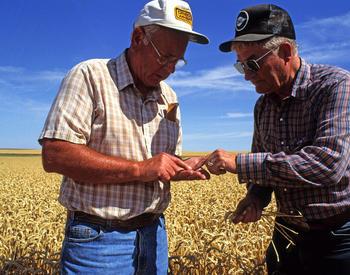Scouting and collecting Wheat Head Armyworms
Several wheat fields were significantly impacted by armyworms in 2007 north of Pendleton. This year I am recommending scouting fields as wheat heads emerge. It would be extremely helpful if we could collect some larva so that we could rear them out in the lab for a positive identification. Silvia Rondon, OSU entomologist, is available to help in this effort. We need them alive and "fresh." Please call me if you can help in this effort.
Here are a few reminders about this pest:
- More than one generation per year
- First generation larvae feed on mature wheat heads.
- Larvae vary in coloration from greenish to cream-colored, with longitudinal white and brown lines down each side of body.
- Larvae feed on the wheat heads from evening to early morning, typically hanging onto the awns upside down and hollowing out kernels.
- Larvae rest in the soil at the base of the plant during the day.
- Damaged kernels appear hollowed out and resemble damage by stored grain pests.
Visit the Wheat Head Armyworm page on the Kansas State University Entomology website for more information.

 Extension Service
Extension Service